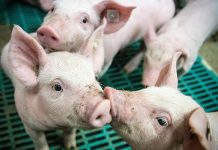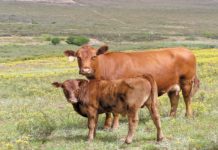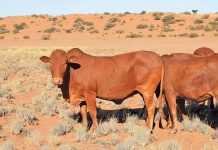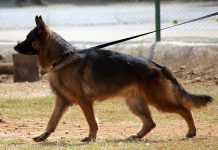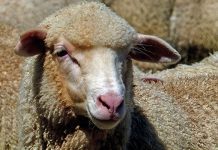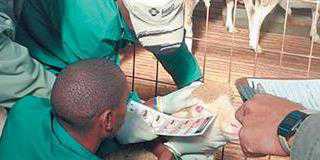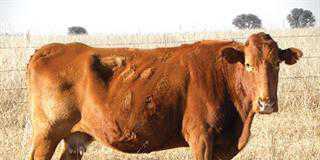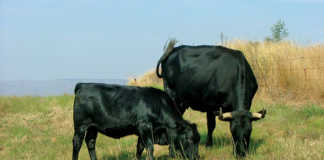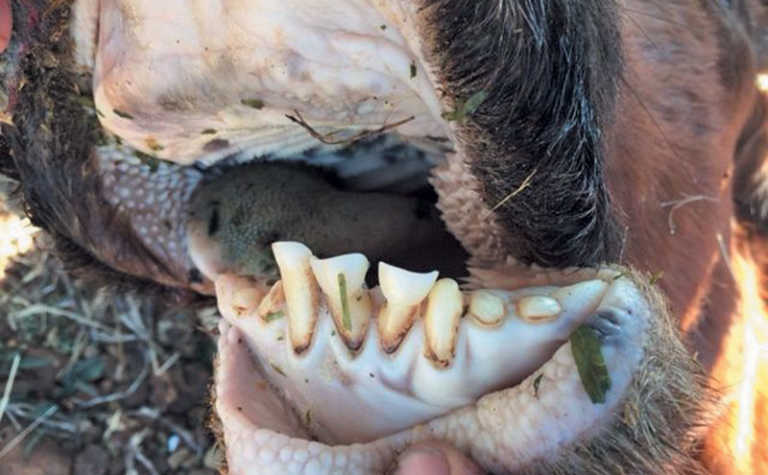
Photo: Prof Cheryl McCrindle
The saddest sight at this time of year is a heavily in-calf cow that lies down and never gets up again. A cow in this condition can take between three and seven days to die, depending on whether she has access to water.
Old-time farmers called August and September die doodmaak maande (the deadly months).
The good news is that this phenomenon can be prevented.
The main cause of the downer cow syndrome on extensive grazing is worn-down teeth. In summer, these animals can survive because the grass is long and soft, but by the end of winter, the grass is short and dry and they need teeth to crop it off.
A simple and effective way to age a bovine is to look at its incisors (front teeth). These are found only on the bottom jaw. The upper jaw has a tough dental plate instead of teeth. To study the teeth, begin by placing the animals in a crush, firmly up against each other.
Then take the first cow firmly by the nose and lift its head. In an adult animal, you will see eight incisor teeth, four on each side.
They should be wide and close together. In old cows, the incisors tend to be more rounded and further apart.
Generally, the older the cow, the more worn the teeth. But there are exceptions. An 18-year- old cow, for example, may still have strong incisor teeth, whereas a nine-year-old cow may have almost no teeth left, and hence is unable to feed herself properly.
So look at the teeth of all the cows in May, when the animals are still fat. Send those without strong incisors to slaughter before winter, regardless of age.
Licks
Another cause of downer cows is a lack of calcium and phosphate in winter pastures. In the old days, farmers solved this problem by making a winter lick of bone meal and salt, and set it out for the herd to eat at night.
With the emergence of mad cow disease (bovine spongiform encephalopathy), bone meal was prohibited. Now farmers must use a commercial winter lick of dicalcium phosphate, urea, molasses and salt.
It is slightly more expensive, but worth it. You can buy the lick either as a block, which can be kept in the kraal so that only your own animals eat it, or as a meal, which can be poured out into half tyres so that cows can eat small quantities at a time.
Grazing and water shortages
Two other causes of downer cows in late winter are a shortage of grazing and too little water.
If the veld or pasture forage is finished, cows need to eat hay. Traditionally, maize stubble and cobs provide roughage for communal cows in winter.
You can also use the loose grass combed out when thatch grass is cut and tied into sheaves for sale.
A cow needs to drink 40ℓ of water a day, and twice that when feeding a calf. Wean the calves in May and sell the bullocks, so that you need less water and feed for your herd in winter.


